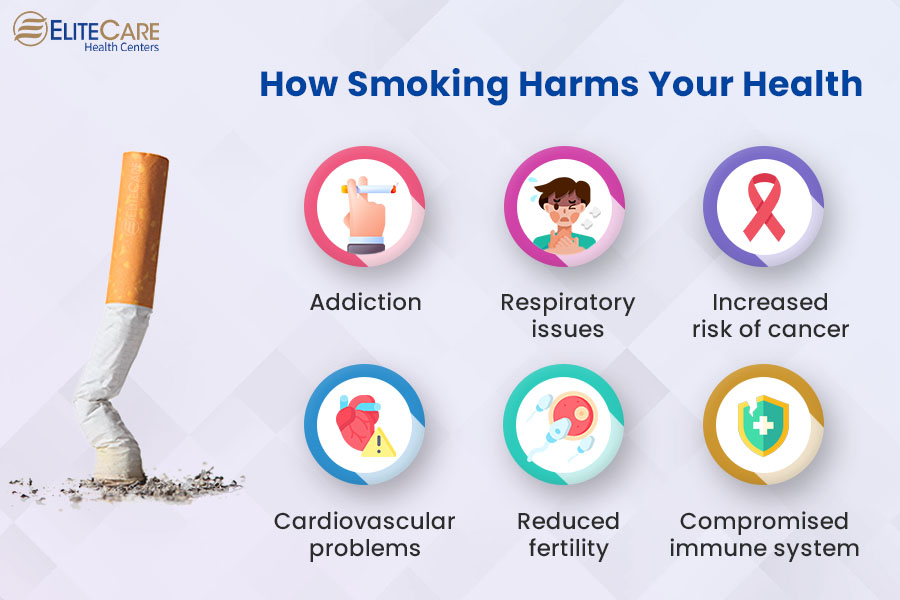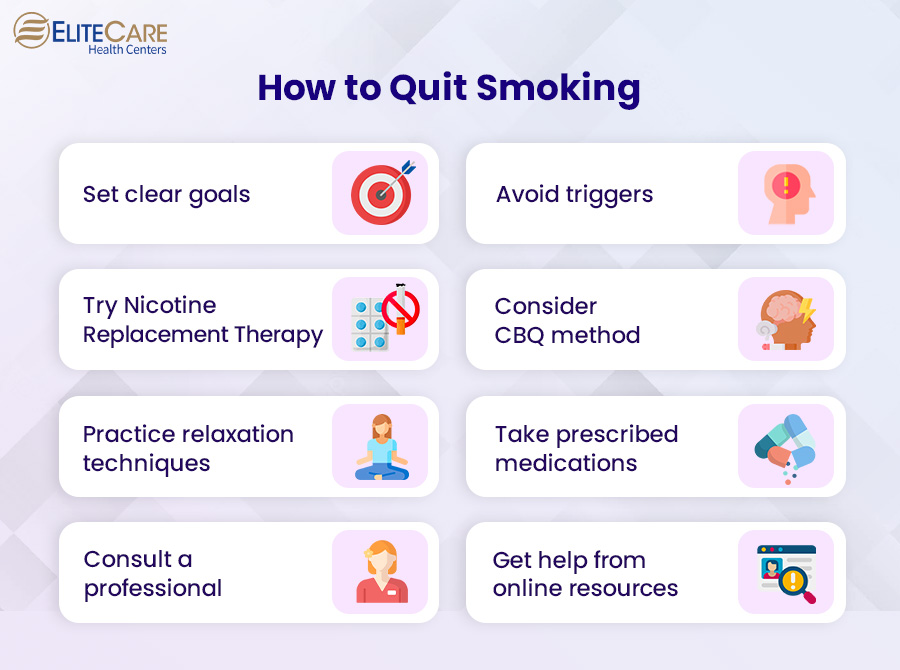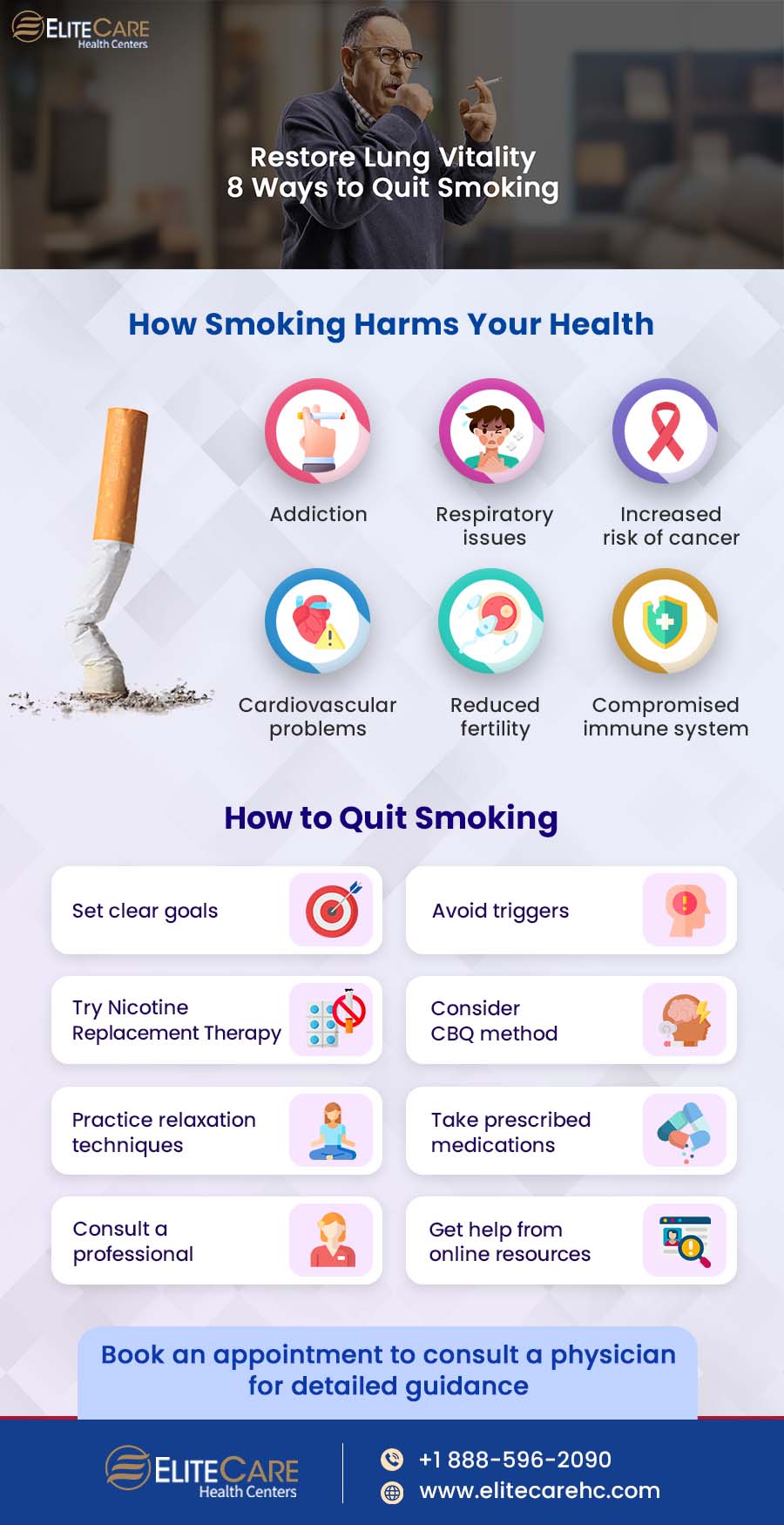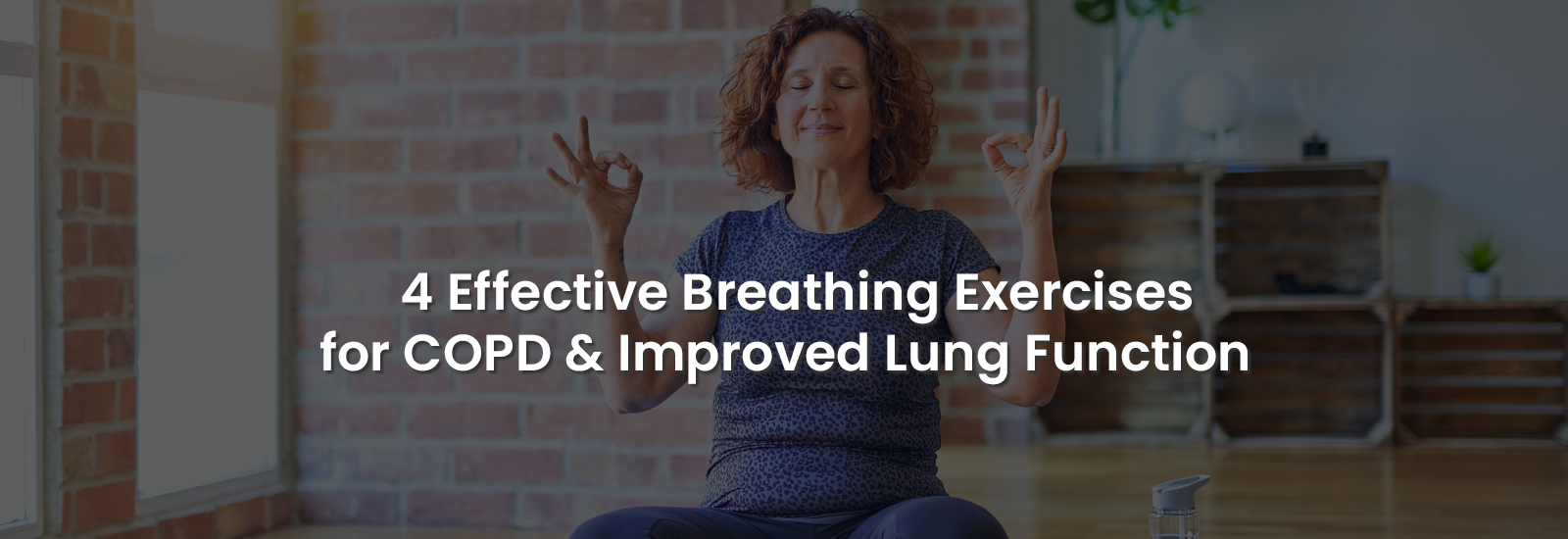
In today’s rapidly evolving world, the air we breathe is not as healthy as it once was. The grim reality of air pollution is affecting us every day. From exhaust fumes to industrial emissions, constant exposure to harmful pollutants can affect our lungs significantly.
In this situation, smoking tobacco can exacerbate respiratory issues and even be fatal in the long run. Quitting smoking is one of the most empowering steps individuals can take to improve their lung vitality.
In this blog post, we will share strategies, techniques, and resources that can assist individuals in becoming smoke-free and maintaining healthy lungs. Read on to learn more.
Why is Smoking Bad for Your Health?

1. Addiction
Nicotine is the primary addictive substance in cigarettes, and it is highly addictive. Smoking cigarettes regularly leads to nicotine dependence, making it difficult for individuals to quit. This addiction can have profound physical and psychological effects, making it a constant struggle to break free from the habit.
2. Respiratory issues
Smoking damages the respiratory system in multiple ways. It irritates the airways, leading to coughing, wheezing, and shortness of breath. The harmful chemicals in cigarette smoke can cause chronic bronchitis, where the airways become inflamed and produce excessive mucus.
Smoking also damages the cilia, tiny hair-like structures that help clear the airways, making it harder to remove mucus and debris. Over time, this can lead to chronic obstructive pulmonary disease (COPD), a progressive and debilitating lung condition.
3. Increased risk of cancer
Smoking is the leading cause of lung cancer, accounting for about 85% of cases. The carcinogens present in tobacco smoke, such as benzene, formaldehyde, and polycyclic aromatic hydrocarbons, damage the DNA in lung cells, leading to the uncontrolled growth of cancer cells. Lung cancer has a high mortality rate and is difficult to treat, particularly when detected at advanced stages.
Besides lung cancer, smoking is linked to an increased risk of various other cancers, including cancers of the mouth, throat, esophagus, bladder, kidney, pancreas, and cervix. The harmful chemicals in tobacco smoke can reach different parts of the body through the bloodstream, increasing the likelihood of cancer development in these areas.
4. Cardiovascular problems
Healthy lungs help maintain optimal heart health. Smoking greatly increases the risk of cardiovascular diseases, including heart attacks, strokes, and peripheral artery disease. The chemicals in cigarette smoke damage blood vessels, leading to atherosclerosis (hardening and narrowing of the arteries) and an increased risk of blood clots.
Smoking also raises blood pressure, reduces oxygen supply to the heart, and promotes the formation of fatty plaques in the arteries, all of which contribute to the development of heart disease.
5. Compromised immune system
Smoking weakens the immune system, compromising the body’s defenses against bacteria, viruses, and other pathogens. Smokers are more prone to respiratory issues, such as pneumonia and bronchitis, as well as other infections throughout the body.
6. Reduced fertility and harm to reproductive health
Smoking can have detrimental effects on reproductive health in both men and women. In men, smoking can reduce sperm count, mobility, and quality, leading to fertility issues. In women, smoking can disrupt hormone levels, affect egg quality, and increase the risk of infertility, miscarriage, and complications during pregnancy.
These health risks associated with smoking are not limited to smokers alone. Secondhand smoke, which is the smoke exhaled by the smoker and the smoke emitted from the burning end of a cigarette, can also be harmful to those exposed to it.
How to Quit Smoking

Resisting smoking can be challenging, but there are various strategies and resources available to help individuals quit smoking or resist the urge to smoke. Here is detailed information on some effective methods and resources:
1. Set clear goals
Setting clear goals is an essential first step in quitting smoking. Individuals should clearly define why they want to quit and what they hope to achieve. These goals could include improving overall health, saving money, setting a positive example for loved ones, or regaining control over life. Make the goals specific, measurable, achievable, realistic, and time-bound (SMART) to have a clear direction and focus.
2. Avoid triggers
Identify the situations, places, or activities that trigger the desire to smoke and try to avoid them. For example, if you usually smoke while drinking coffee, consider switching to tea or another beverage for a while. Changing routines and finding alternative activities can help break the association between smoking and specific triggers and restore healthy lungs.
3. Consider Nicotine Replacement Therapy (NRT)
4. Try CBQ method
Cognitive Behavioral Quitting or CBQ is a method that focuses on changing the thoughts and behaviors associated with smoking. It includes identifying negative thoughts about quitting, developing proactive strategies to manage cravings, and replacing smoking with healthier habits. CBQ can be done individually or with the help of a therapist or counselor.
5. Follow relaxation techniques
Engaging in relaxation techniques can help manage stress and cravings associated with quitting smoking. Techniques such as self-hypnosis, yoga, deep breathing exercises, meditation, and progressive muscle relaxation can promote a sense of calmness and reduce the desire to smoke.
6. Take prescribed medications
Certain medications, such as nicotine receptor agonists (e.g., varenicline), or antidepressants (e.g., bupropion), may be prescribed to assist with smoking cessation. These medications can help reduce nicotine cravings and withdrawal symptoms, making it easier to quit smoking. It is important to visit a medical clinic and consult a primary care physician for guidance and to discuss the suitability of these medications.
7. Consult a professional
Seeking professional help through counseling, therapy, or support groups can greatly increase the chances of successfully quitting smoking. Primary care physicians can provide personalized guidance, support, and strategies tailored to individual needs and circumstances.
8. Use apps & helpline numbers
Several resources are available to assist individuals on their journey to quit smoking. Some notable resources include:
- smokefree.gov: A comprehensive website providing information, tools, and support for quitting smoking. It offers step-by-step quitting guides, educational materials, and access to a live chat feature.
- YouCanQuit2: A resource specifically designed for military personnel and their families, providing tailored information and support to quit smoking.
- quitSTART app: An app developed by the National Cancer Institute (NCI) that provides personalized tips, tracking tools, and support for quitting smoking. It offers strategies to manage cravings, motivational messages, and progress tracking.
- National helplines: Helplines like 1-800-QUIT-NOW (1-800-784-8669), the American Cancer Society hotline (1-800-227-2345), National Cancer Institute smoking quit line (877-448-7848), and Veterans smoking quitline (1-855-784-8838) provide access to trained counselors who can offer guidance, support, and resources for quitting smoking.
By combining these strategies, individuals can enhance their chances of resisting smoking and successfully quitting. Remember, quitting smoking is a process, and it may take multiple attempts before achieving long-term success.
What Happens When You Quit Smoking
When individuals quit smoking, their body goes through a period of adjustment as it adapts to the absence of nicotine and the chemicals found in tobacco smoke. This adjustment phase can be accompanied by withdrawal symptoms.
Withdrawal symptoms might include:
- Increased appetite.
- Weight gain.
- Depression.
- Insomnia.
- Irritability.
- Frustration.
- Anxiety.
- Restlessness.
- Difficulty concentrating.
Withdrawal symptoms are temporary and will diminish over time as your body adjusts to being smoke-free. If withdrawal symptoms are severe or persistent, consider consulting a primary care physician for additional support and guidance. Contact EliteCare Health Centers, one of the leading medical clinics in Florida, and consult our board-certified primary care physicians. We have multiple healthcare clinics across Florida where we offer a wide range of senior care services including vaccinations, routine physical exams, EKG test, screenings, wellness services, etc. Schedule your appointment now!






